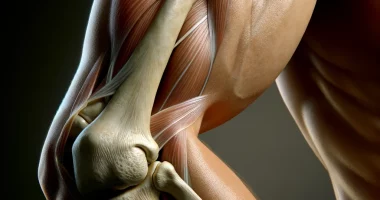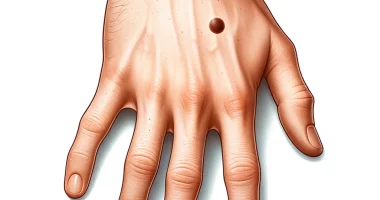Occipital neuralgia
Definition
Occipital neuralgia is an attack-like pain in the occipitoparietal region of the head, which is caused by irritation of the greater/smaller occipital nerves. Pathology occurs with degenerative changes in the cervical vertebrae, compression of nerve structures by muscles, or dilated venous vessels. The condition is manifested by painful paroxysms that last a few minutes and are repeated many times during the day. To diagnose occipital neuralgia, radiography, spine CT, neuroimaging studies, and Dopplerography of cervical vessels are performed. Treatment includes drug blockades, physical therapy, and manual therapy.
General information
The relationship between headaches and cervical pathologies was first identified in 1926. Fourteen years later, the full clinical picture of occipital neuralgia was described. Occipital neuralgia is included in the 3rd edition of the International Classification of Headaches. It belongs to the subsection “painful cranial neuropathies.” The specific weight of this pathology among patients with chronic cervicalgia reaches 40%. Given the high prevalence and difficulties of pharmacological treatment, this disease is a severe problem for clinical neurology.
Causes
The trigger factor of neuralgia is usually a mechanical damage to the occipital nerves. It is due to the anatomical features of the formation of these nerve structures: they are poorly protected by covering tissues and are susceptible to traumatization. Given the interconnection of nerve, muscle, bone, and cartilage structures, several etiologic factors are often combined in one patient. The most common causes of occipital neuralgia are:
- Osteoarthritis of the intervertebral joints. Joint damage is observed with osteochondrosis, rheumatoid arthritis, and other degenerative processes in the cervical vertebrae. The condition is aggravated by inadequate neck exertion, whiplash trauma, and scoliosis.
- Myofascial syndrome. Compression of the occipital nerves occurs with painful tension of the neck muscles arising from a prolonged stay in an uncomfortable position. Such a problem is characteristic of office workers, conveyor line employees, seamstresses, and other manual labor masters.
- Vascular disorders. Venous congestion occurs against the background of atherosclerosis of the main arteries of the head. Permanently dilated veins squeeze neural structures, causing transient occipital pain.
- New neoplasms. Any voluminous masses in the spine and occipital region cause mechanical compression of nerves and provoke paroxysms of headaches.
Symptoms of occipital nerve neuralgia
The patient’s main complaint is sharp headaches occurring on one side of the head or all over the back of the head. Unpleasant sensations develop suddenly, like a shot or electric shock; some people note pulsating cervicalgia. Pain reaches maximum intensity, lasts from a few seconds to a couple of minutes, and then just as suddenly disappears. Symptomatology is accompanied by photophobia, acoustophobia, and lacrimation.
During an attack, the patient tries to remain as still as possible, as any movement increases the distressing symptoms. Some people slightly tilt their heads back and to the side to relieve their suffering, but such actions do not have the expected effect. From one to several dozen attacks develop per day. They can be triggered by awkward head turns, jolting in transportation, sneezing, and coughing.
Between attacks of occipital neuralgia, headaches practically do not occur. Occasionally, patients complain of unpleasant sensations of burning, tingling, or crawling goosebumps at the back of the head. This is also determined by a decrease in skin sensitivity of the parietal and occipital region up to numbness. In this case, the trigger points of the nerves remain painful; accidentally touching them can cause a new paroxysm of neuralgia.
Complications
Regular headaches worsen the quality of life, increase anxiety and depressive moods, and occasionally cause carcinophobia. Frequent painful paroxysms are associated with decreased performance, especially in professions requiring increased concentration. Neurological disorders are accompanied by blood supply and trophic tissue disorders, so patients with a long history of neuralgia lose hair on the back of the head.
Diagnosis
If occipital neuralgia is suspected, an examination by a neurologist is indicated. Valuable information is obtained by physical examination, which reveals areas of decreased or increased sensitivity, trigger points at the exit points of occipital nerves, and reflex disorders. With a typical clinical picture, it is not difficult to determine occipital neuralgia. To clarify its causes, the following methods are prescribed:
- Radiography of the spine. X-rays can detect signs of degenerative changes in bone and cartilage structures, anterior osteophytes, scoliosis, and other violations of the normal anatomy of the cervical vertebrae. An MRI or CT scan of the cervical spine can help clarify the degree of spinal lesions.
- Ultrasound of neck and head vessels. The study is prescribed to determine atherosclerotic lesions of the arteries and is carried out as part of a comprehensive diagnosis for patients with frequent attacks of headaches. When indicated, the examination is supplemented with rheoencephalography to assess blood flow in the brain.
- MRI of the brain. Neuroimaging is used to exclude other neurological causes of cervicalgia, in particular, in suspected Arnold-Chiari anomalies. Electroencephalography, echoencephalography, and brain CT are prescribed to clarify the neurological diagnosis.
- Laboratory tests. To assess the patient’s somatic status, the results of a hemogram, blood biochemical analysis with determination of the lipid spectrum, and general urinalysis are required. With concomitant cardiac pathology, a study of the blood coagulation system is recommended.
Differential diagnosis
Differential diagnosis is carried out with migraine, arterial hypertension, and cluster pain. When making the diagnosis, it is necessary to distinguish occipital neuralgia from reflected pain in lesions of the atlantoaxial and facet joints of the cervical vertebrae. In a comprehensive assessment of neurological status, occipital cervicalgia is differentiated by the presence of sensitive trigger points of the cervical muscles or their attachment sites.
Treatment of occipital nerve neuralgia
Conservative therapy
Blockades with local anesthetic solutions are the most effective method of correcting occipital neuralgia. Manipulation is initially performed for diagnostic purposes, after which, if the diagnosis is confirmed, the patient is prescribed therapeutic blockades. After introducing anesthetics into the trigger zone, the frequency of attacks is reduced, and the importance of provoking factors that cause the appearance of new paroxysms of pain is reduced.
Oral analgesics have no significant therapeutic effect. At the same time, patients with occipital neuralgia widely use non-medicamentous methods. Manual therapy, which restores the physiological volume of movement in the cervical region and normalizes muscle tone, has a positive effect on the course of the disease. As auxiliary methods of therapy, acupuncture, and electrical stimulation are used.
Surgical treatment
If conservative therapy methods do not produce an effect, additional examination and treatment of patients in the neurosurgery department are indicated. Isolated C2 neurectomy or ganglionectomy is performed to relieve pain syndrome. In severe forms of facet joint arthropathy, a neurosurgical fusion of C1-2 is possible. Recently, neurostimulation of the occipital nerve has also been successfully used to eliminate occipital neuralgia.
All these treatment options are available in 93 hospitals worldwide. For example, Occipital nerve stimulation can be performed in 8 clinics across Germany for an approximate price of $32.9 K(https://doctor.global/results/europe/germany/all-cities/all-specializations/procedures/occipital-nerve-stimulation).
Prognosis and prevention
Occipital neuralgia is a polyetiologic condition with a chronic course, which complicates its effective therapy. With complex treatment, it is possible to reduce the frequency of paroxysms of pain, but it is not always possible to completely rid the patient of symptoms. Prevention of neuropathy consists of preventing and timely detection of diseases of the cervical zone, typical causes of mechanical compression of nerves.

